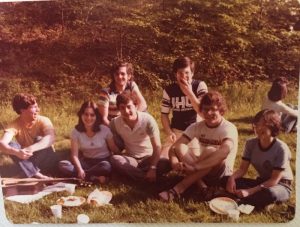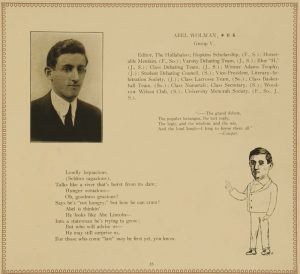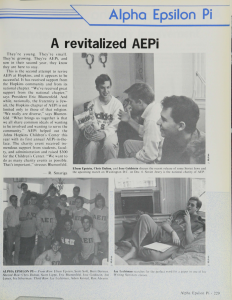
Growing up, I had never heard of Hopkins being a particularly Jewish school. Jewish friends and family would always note the Jewish life at Penn, Columbia, or Cornell, and as I looked at colleges I took it as implied that Hopkins was not a “traditionally Jewish” school. But when I got on campus, I discovered that my expectations were completely unfounded: not only were there many other Jewish students on campus, but also Jewish life at Hopkins was rather robust. This raised a question for me—what was Jewish life like on a campus that does not have popular Jewish life name recognition?
This summer, I set out to research and present the history of Jewish life at Hopkins through the Hugh Hawkins Research Fellowship for the Study of Hopkins History. With the support of the fellowship, I was able to dig in to the University Archives and other Baltimore archives, as well as conduct alumni interviews to investigate the topic. What I discovered was rather surprising and enlightening.

I discovered that from the start Hopkins had been welcoming to Jews. Early Jewish faculty and students, such as J. J. Sylvester and Cyrus Adler report that they were welcomed on campus. This was notably at a time when many other institutions openly discriminated against Jews, and in Sylvester’s case, barred him from a degree. Hopkins’ early Jews were leaders in both the local and national Jewish and Zionist movements, with several students and professors on the executive board of organizations such as the Intercampus Zionist Association.
Jewish life grew over time, and by the late 1930s there were half a dozen Jewish fraternities and approximately 30% of the school was Jewish. Many of these students came from major Jewish families in Baltimore, such as the Friedenwalds, Hutzlers, and Meyerhoffs. This growth however, was hampered by the all-but-proven quotas instituted by President Bowman in the mid 1940s, carried out through the end of his tenure in 1948 and continued through President Bronk’s (1949-53). During this period, Jewish students fell to 10% of the student body, and several Jewish fraternities were disbanded.
Yet, starting in the mid 1950s, more and more Jewish students came to Hopkins. They reestablished several Jewish fraternities and established the Jewish Students Association, the main Jewish student organization on campus. The Jewish population continued to grow through the 1970s, during which time students organized additional Jewish groups, established a kosher dining hall in the basement of one of the freshmen dorms, AMR I, and facilitated many events for both Jews and non-Jews. According to the highest estimates, the campus was as much as 40% Jewish in the mid 1970s.

Starting in the 1980s, however, the Jewish population at Hopkins began to slowly decline from its peak, as many students started to go further away for college. Jewish life at Hopkins remained robust, though, and was boosted by the hiring of rabbi Joseph Katz, a few revitalizations of Alpha Epsilon Pi, and finally the creation of Hopkins Hillel in the late 1990s. Since then, Jewish life at Hopkins has been thriving, despite a proportion of the campus population that hovers around 10%.
Certainly after this project I can say that Jewish life at Hopkins has had its ups and downs, but the old popular myth that Hopkins has not been a “Jewish” school is definitely debunked. I hope that this project will help share the story of Hopkins Jewish life with others, especially college applicants, to tell them about its robust history and present. Additionally, this project will help reframe the conversation in Jewish communities about Johns Hopkins and other schools like it toward one in which Hopkins is a thriving Jewish option. This project would not have been possible without the aid of the archivists of the University Archives and the Jewish Museum of Maryland, Hopkins Retrospective Program Manager Jennifer Kinniff, Professor Kenneth Moss, several extremely helpful alumni, Hopkins Hillel, the generosity of the late Hugh Hawkins, and my parents.
Interested in applying for a Summer 2018 Hugh Hawkins fellowship? Watch for our announcement of the application deadline this fall, and read more about the program here.
